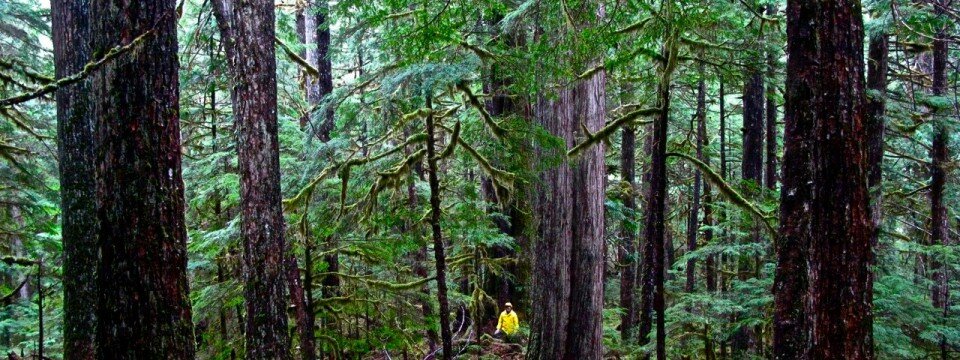By Richard Carstensen
EXECUTIVE SUMMARY
The Regional Native Corporation in Southeast Alaska (Sealaska Corp.) is seeking Congressional legislation that would change the terms of the Alaska Native Claims Settlement Act (ANCSA 1971) to allow selection of new lands for logging. Through the proposed legislation (Senate Bill 340), Sealaska would select 68,715 acres of land from 9 new areas. In addition, this legislation designates 152,103 acres of conservation lands. With side-by-side comparisons using photographs, aerial imagery, timber-type GIS layers, and on-the-ground experience, this report describes values and differences on respective parcels. From this analysis, lands selected for logging are found to be among the richest in the region. They are disproportionately located on productive karst soils, with large old trees (except where already logged), in association with key stream channel types. Although maps for redcedar distribution on the Tongass are poor, field-work in these and comparable sites suggests the selections are also targeting this valuable tree species. Because of inherent high productivity of these sites, some of the selections include significant young- growth forests as well, including alder-dominated riparian stands and even-aged young-growth conifers. These stands still provide valuable habitat for fish and wildlife and are worthy of conservation efforts. In contrast, the 152,000 acres proposed for conservation are unproductive with sparse tree growth, and most are already protected from logging by the roadless rule. Consequently, their inclusion represents minimal additional conservation gain. This proposed land exchange continues and accelerates the historic pattern of high-grading that has skewed forest diversity in the region over the past half century. The selection has expanded from big trees to now include valuable red and yellow-cedars. When quality and rarity of these forest types are considered, losing these acres to clear-cutting is not in the public interest.
Richard Carstensen 2013
View and download the updated version www.seawead.org/richard/s.340carstensen.pdf


